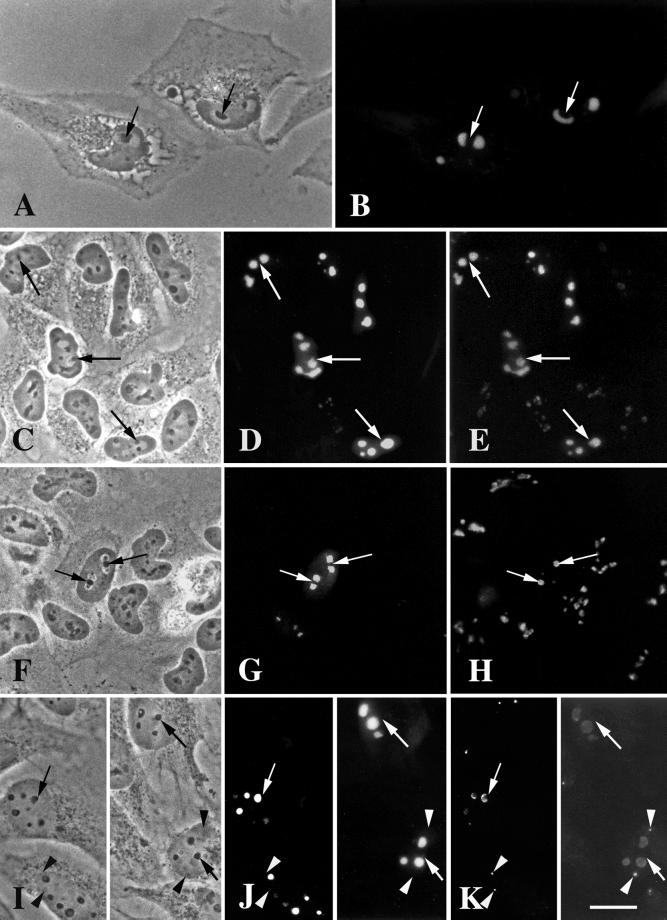Figure 6.
DmNopp140 partitions HeLa nucleoli into phase-light and phase-dark regions, and it also fails to localize to endogenous CBs. (A and B) GFP-DmNopp140 localized exclusively to the phase-light regions of the nucleoli (B). The phase-dark regions (A and B) were completely devoid on GFP-DmNopp140. (C–E) GFP-DmNopp140 (D) colocalized with endogenous fibrillarin (E) in the phase-light regions of the partitioned nucleoli. The S4 anti-human fibrillarin antibody and a rhodamine-conjugated secondary antibody detected the endogenous fibrillarin (E). Precisely aligned arrows point to phase-dark regions. (F–H) GFP-DmNopp140 (G) again localized to the phase-light regions, whereas endogenous nucleolin (H) localized to the phase-dark regions (F–H, arrows). An anti-human nucleolin antibody and a rhodamine-conjugated secondary antibody detected the endogenous nucleolin (H). (I–K) GFP-DmNopp140 localized to the phase-light regions of partitioned nucleoli, and precisely matched arrows show the phase-dark regions. The anti-human coilin antiserum R288 detected endogenous CBs (K, arrowheads). GFP-DmNopp140 failed to localize to endogenous CBs, but endogenous coilin appeared to accumulate on the periphery of or within the phase-light regions (K). Bar (A–K), 20 μm.

